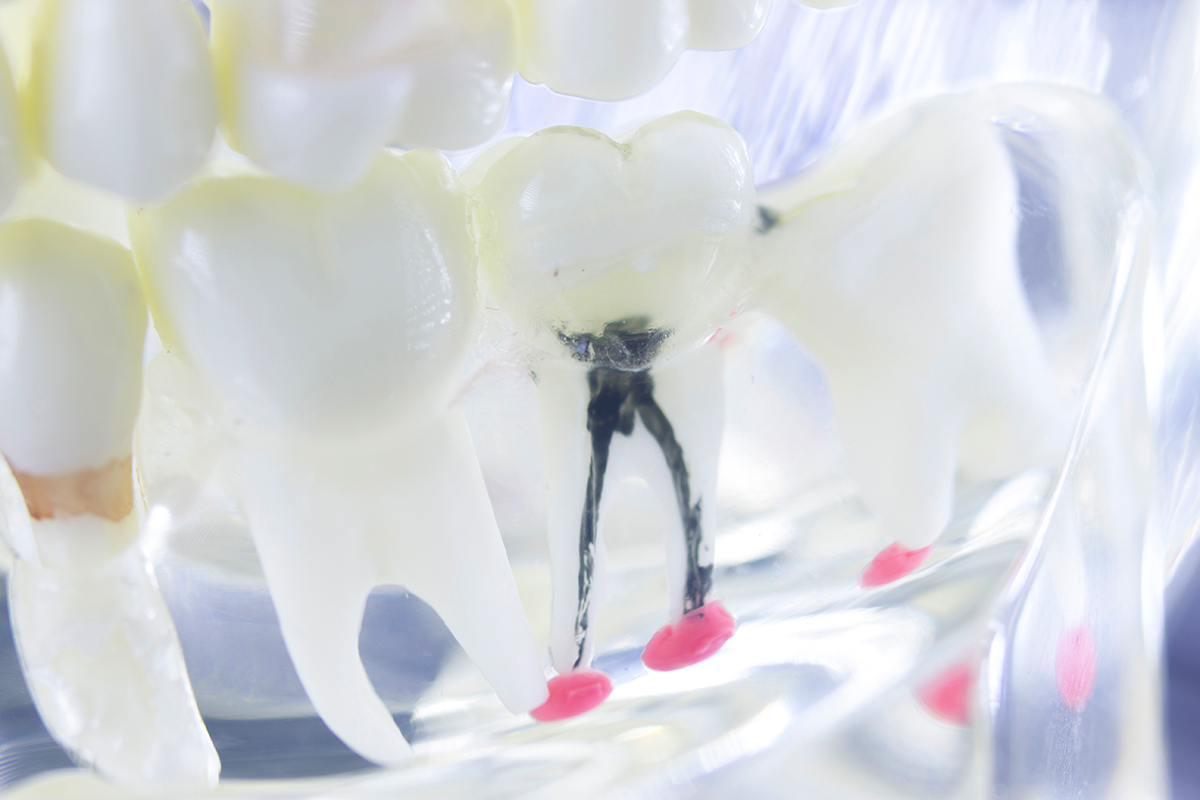If “I Love You” are the three little words everyone wants to hear, “Root Canal Therapy” are the three little words everyone would like to avoid.
But root canals get a bad rap. They relieve pain, help save your tooth and can last a lifetime.
Does a root canal hurt?
Before we dive into learning about the process, let’s first discuss the topic on everyone’s mind. For some reason, root canals are thought to be a painful procedure.
In reality, your dentist will make sure you are completely numb during the process. Anesthesia is quick and relatively painless.
You should feel no more pain from having a root canal than any other procedure. In fact, you should feel better after having root canal therapy because you should no longer have a toothache.
When do you need a root canal?
To answer this question, you need to understand the anatomy of a tooth.
The outer part of the tooth is called the enamel. Under the enamel is the dentin, which is also a hard layer. These two layers protect the inside of the tooth.
Inside the dentin, lies the pulp. The pulp contains blood vessels, nerves, and soft tissue. The pulp was essential to the growth and development of your tooth.
But now that your tooth is fully grown, it can survive without the pulp. That is good news for you because sometimes the pulp gets inflamed or infected. When this happens, the dentist removes the soft tissue, and that process is called a root canal.
How does the pulp get infected?
It seems odd that the area of a tooth that is protected by two hard layers would get infected. There are a variety of things that can cause the infection to occur.
An injury to your tooth may cause damage to the pulp. Deep tooth decay can allow the outside environment to get into the pulp and cause an infection. Also, if you have repeated dental procedures on the same tooth, a crack or chip may form in the enamel and dentin, causing the pulp to become irritated.
It’s hard to pinpoint an exact reason your tooth got infected. But, it’s vital that you take the steps to get the infection treated.
What Happens During Root Canal Therapy?
After you are comfortably numb, the dentist isolates the affected tooth with a protective sheet called a dental dam. This isolates the tooth and keeps it clean and dry during the procedure.
After you are prepped, the dentist will start at the top of the crown and work his or her way inside of the tooth—making an opening. The pulp will be extracted through this opening.
The dentist will fill the opening with a biocompatible material. He or she will then cover the access with a temporary filling. You will be sent home after the temporary filling is in place.
Why do I have to come back for a follow-up?
A tooth after the root canal becomes brittle. Hence, your dentist has to have a crown specially made for the tooth to protect it.
Root canals are considered routine treatment, but if you ignore the infection inside your mouth, the results may be less than routine. If left untreated, the infection found inside your mouth can spread to other parts of your body and be life-threatening.
If you are having tooth pain, make an appointment with your dentist today.







